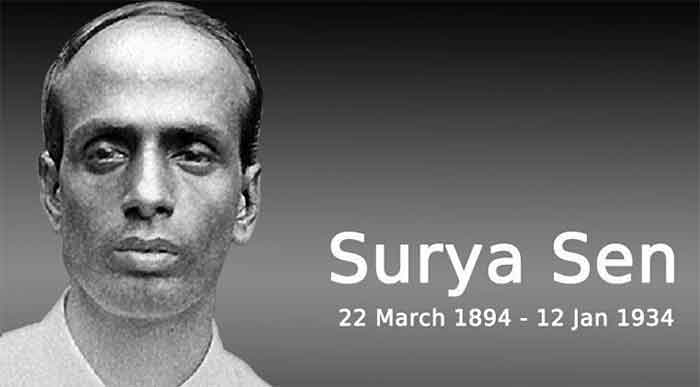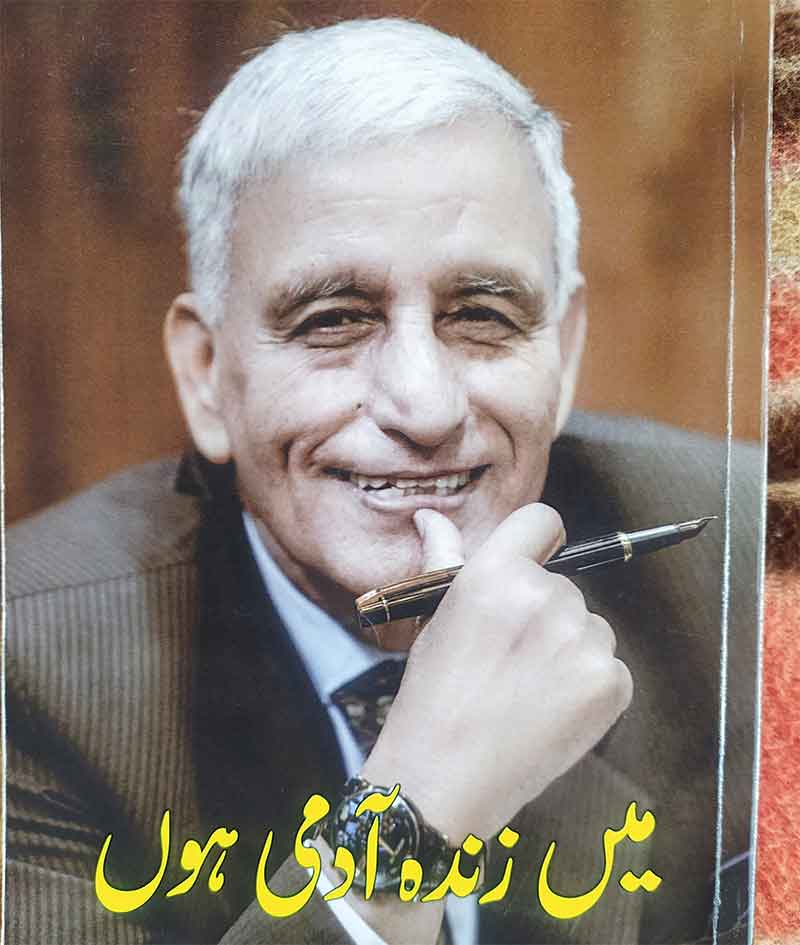
When Surya Sen sacrificed his life at the age of only 40 for the freedom of India in 1934, he had already succeeded in inspiring a very large number of youth to devote their life to the freedom movement. Although he had been subjected to extremely painful torture before being hanged on 12 January, he was completely unwavering in his convictions and he wrote in his last message to his countless admirers—“ At such a grave, such a pleasant, such a solemn moment, what shall I leave behind for you?—Only one thing. My dream, my golden dream, for free India.”
Born on March 22 1894, Surya Sen, also known as Master Da and Surjo Sen,was attracted towards the freedom movement in his student days. After becoming a teacher he became more involved in the freedom movement and at the age of 24 he was appointed the President of the Indian National Congress for Chittagong area. He was imprisoned for about two years for his participation in the freedom movement. Most of his activities were in areas which are now in Bangladesh.
While he participated in the non-cooperation and other movements of the Congress, Surya Sen was soon also involved in revolutionary activities. He was a very inspiring leader because of his complete devotion to his ideals. Even teenagers like Jeeban Ghoshal and Hargopal Bal ( known popularly as Tegra) were known as very valient soldiers of this struggle.These activities went on increasing till one of the most daring raids in the freedom movement was organized on the Chittagong armoury on April 18 1930. This was a well-guarded armoury but the revolutionaries managed to overpower the guards and escaped with firearms to nearby hills.Their aims were actually much bigger but all of these could not be achieved.
This prompted the colonial government to mount a very big assault and there was a big confrontation soon in the hills. Surya Sen managed to evade arrest for a long time, assuming several identities and hiding with the help of supporters. However when betrayed by a traitor he was arrested in 1933. After subjecting him to very painful forms of torture, the colonial rulers hanged him in early 1934. By then he had inspired many, many youth who kept the struggle going in several ways.
Tarakeswar Dastidar was his close colleague who guided the struggle for some months after his arrest. After some time,however, he too was arrested and executed on the same day as Surya Sen.
Several disciples of Master Da played very memorable roles in the freedom movement and are still remembered. Preetilata Wadedkar is remembered in both India and Bangladesh as one of the most valiant martyrs.
She was born in a village of Chittagong (now in Bangladesh) in 1911. She was a topper in school and was singled out for special merit in her college at Calcutta. She was also emerging as a talented writer.
While her parents were thinking of a bright career ahead of her, Preetilata was thinking of serving the freedom movement. She always had strong feelings against colonial rule, but these feelings intensified after meeting Master Surya Sen. Surya Sen and his colleagues had made big plans for liberation struggle and Preetilata decided to join them wholeheartedly. In 1932, at the age of only 21, she was in the thick of the revolutionary movement in Chittagong.
Despite her young age and lack of adequate experience, Preetilata gave enough evidence of courage as well as capability in early actions to win the confidence of her mentor Surya Sen.
This confidence led to bigger responsibilities in leadership role to be given to Preetilata. During one such action she received a bullet wound. Although she was bleeding profusely, she still succeeded to some extent in escaping. But because of the loss of blood, she could not run beyond a point. It was now imminent that she will soon fall into enemy hands. At this point she consumed the poison she had brought with her to escape capture. Thus ended the life of a very courageous and talented freedom fighter at a very young age.Her acts of great courage at a very tender age will remain as a source of inspiration for a very long time.
Kalpana Dutta was yet another famous disciple of Master Da. She was brought up in a very well-to-do family and was known as a very talented student. However she left all considerations of a lucrative career and decided to work with Master Da in the freedom movement. While helping in the planning for an action she was arrested. After her release, for several decades she played an important and distinguished role in many walks of life.
Bina Das was another talented disciple of Surya Sen who took part in several valiant activities. She was a legislator and author in the post independence period and received Padma Shri for her social work. Unfortunately her last days in Rishikesh were spent in a state of great neglect.
Ananta Singh was a rather colourful follower of Master Da from Punjab who took part in several revolutionary activities. He had successfully escaped but when he heard about the very cruel torture of his comrades he was so distressed that he surrendered. After undergoing a period of imprisonment, he emerged in several diverse roles in the post-independence period—ranging from production of movies to alleged robbing of banks ( to raise money for political activities)!
Ambika Chakravarty fought in Chittagong struggles and was later imprisoned at the Cellular Jail in Andamans along with Ananta Singh. In the post independence period he served as a Communist Party legislator in W. Bengal.
Ganesh Ghosh was another senior colleague of Surya Sen who took part in revolutionary activities and went to prison in the Andamans. In the post-independenc period he served as Communist Party MLA and MP for several years.
Lokenath Bal, a colleague of Surya Sen who was sent to Cellular Jail for his participation in revolutionary activities, was known in the post-independence period for servng in senior civic positions. His 15 year old brother , Hargopal Bal died in the struggle of April 1930 after being hit by a bullet in the fighting in hills.
The valiant activities of SuryaSen and his colleagues have been the subject of two films in recent times Khelein Ham Jee Jaan Sey ( 2010) and Chittagong ( 2012). Much earlier a Bangla film was made in 1949.
Bharat Dogra has contributed extensive writings on the freedom movement of India. His recent books include ‘When the Two Streams Met’ and ‘Man Over Machine-A Path of Peace’.

















































